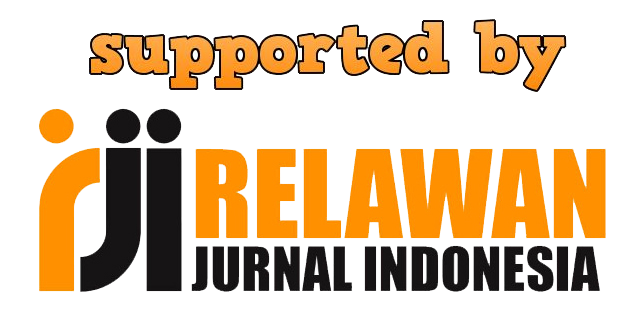WHAT TOURISM PRODUCT ATTRIBUTES ARE DOMINANT INFLUENCING REVISIT INTENSION TO CULINARY TOURISM DESTINATION?
DOI:
https://doi.org/10.23887/jish-undiksha.v10i2.33447Keywords:
Tourism Product Attributes, Revisit Intension, Culinary Tourism, Domestic TouristAbstract
Culinary tourism is a form of tourism that is currently developing. Studies on the preferences of culinary tourists will be beneficial for the development of this form of tourism in the future. This study analyzes the influence of tourism product attributes: tourist attraction, accessibility, and amenities on revisit intention to a culinary tourism area. This study used a survey method. The questionnaire was distributed to 100 domestic tourists who visited the culinary tourism area in Bogor City, Indonesia. Methods of data analysis using descriptive analysis, multiple regression, F-test, and T-test. This study indicated that tourist attraction has a positive and significant effect on revisit intention, while accessibility and amenities do not affect revisit intention. However, tourist attraction, accessibility, and amenities simultaneously have a positive and significant effect on revisit intention. This study concluded that the dominant attribute of culinary tourism products is a tourist attraction that includes a variety of food and distinctiveness.
References
Baker, D. A., & Crompton, J. L. (2000). Quality, satisfaction and behavioral intentions. Annals of Tourism Research, 27(3), 785–804.
Chen, C.-F., & Tsai, D. (2007). How destination image and evaluative factors affect behavioral intentions? Tourism Management, 28(4), 1115–1122.
Cole, S. T., & Scott, D. (2004). Examining the mediating role of experience quality in a model of tourist experiences. Journal of Travel & Tourism Marketing, 16(1), 79–90.
Dinas Pariwisata dan Kebudayaan Kota Bogor. (2020). Data Perkembangan Kunjungan Wisatawan ke Kota Bogor. Retrieved from https://disparbud.kotabogor.go.id/index.php/post/index/2/92
Frochot, I. (2013). An analysis of regional positioning and its associated food images in French tourism regional brochures. Wine, Food, and Tourism Marketing, 8408, 77–96. https://doi.org/10.4324/9781315043395
Gatley, A. (2006). Review of food tourism around the world: Development, management and markets. In C. M. Itall, L. Sharples, R. Mitchell, N. Macionis, &B. Cambourne (Eds.) (2003). Oxford: Butterworth Heinemann. International Journal of Hospitality Management, 25, 340–343.
Holloway, C., Davidson, R., & Humphreys, C. (2009). The Business of Tourism (8th Edition). England: Pearson Education Limited.
Kautsar, M. A. (2018). Rabbit Town, ‘selfie culture’ versus awareness of art. Retrieved from The Jakarta Post website: https://www.thejakartapost.com/life/2018/03/30/rabbit-town-selfieculture-versus-awareness-of-art.html
Khasawneh, M. S., & Alfandi, A. M. (2019). Determining behaviour intentions from the overall destination image and risk perception. Tourism and Hospitality Management, 25(2), 355–375. https://doi.org/10.20867/thm.25.2.6
Kivelä, J. J., & Chu, C. Y. H. (2001). Delivering quality service: Diagnosing favorable and unfavorable service encounters in restaurants. Journal of Hospitality & Tourism Research, 25(3), 251–271.
Lehto, X. Y., O’Leary, J. T., & Morrison, A. M. (2004). The effect of prior experience on vacation behavior. Annals of Tourism Research, 31(4), 801–818.
Lin, C. H. (2014). Effects of Cuisine Experience, Psychological Well-Being, and Self-Health Perception on the Revisit Intention of Hot Springs Tourists. Journal of Hospitality and Tourism Research, 38(2), 243–265. https://doi.org/10.1177/1096348012451460
Long, L. M. (2004). Culinary tourism. University Press of Kentucky.
Mayasari, W. M., & Budiatmo, A. (2017). Pengaruh Atribut Produk Wisata Dan Word Of Mouth Terhadap Keputusan Berkunjung Pada Objek Wisata Taman Margasatwa Semarang. Jurnal Administrasi Bisnis, 6, 1–8.
Muflikhah, V., Mbulu, Y. P., & Gunadi, I. M. A. (2018). Pengaruh Electronic Word of Mouth di Media Sosial Instagram dan Atribut Produk Wisata terhadap Keputusan Berkunjung di Floating Market Lembang. Journal of Tourism Destination and Attraction, 6(2), 16–29. https://doi.org/https://doi.org/10.35814/tourism.v6i2.770
Okumus, B., Okumus, F., & McKercher, B. (2007). Incorporating local and international cuisines in the marketing of tourism destinations: The cases of Hong Kong and Turkey. Tourism Management, 28(1), 253–261.
Quan, S., & Wang, N. (2004). Towards a structural model of the tourist experience: An illustration from food experiences in tourism. Tourism Management, 25(3), 297–305.
Rageh, A., Melewar, T. C., & Woodside, A. (2013). Using netnography research method to reveal the underlying dimensions of the customer/tourist experience. Qualitative Market Research: An International Journal.
Ryan, C. (2002). The tourist experience: The new introduction. London, England: Cassell.
Scarpato, R. (2002). Gastronomy as a tourist product: The perspective of gastronomy studies. In A.-M. Hjalager & G. Richards (Eds.). In Tourism and gastronomy (pp. 51–70). London: Routledge.
Sparks, B., Bowen, J., & Klag, S. (2003). Restaurants and the tourist market. International Journal of Contemporary Hospitality Management, 15(1), 6–13. https://doi.org/10.1108/09596110310458936
Steinmetz, R. (2010). Food, tourism and destination differentiation: The case of Rotorua, New Zealand. Retrieved from http://aut.researchgateway.ac.nz/bitstream/handle/10292/1090/SteinmetzR.pdf?sequence=3
Suwantoro, G. (2004). Dasar-dasar pariwisata. Yogyakarta: Andi.
Umar, H. (2003). Metode Riset Bisnis. Jakarta: Gramedia Pustaka Utama.
United Nation World Tourism Organization. (2013). UNWTO Annual Report 2012. Madrid.
Zhang, H., Wu, Y., & Buhalis, D. (2018). A model of perceived image, memorable tourism experiences and revisit intention. Journal of Destination Marketing and Management, 8(February), 326–336. https://doi.org/10.1016/j.jdmm.2017.06.004
Downloads
Published
Issue
Section
License
Authors who publish with the Jurnal Ilmu Sosial dan Humaniora agree to the following terms:
- Authors retain copyright and grant the journal the right of first publication with the work simultaneously licensed under a Creative Commons Attribution License (CC BY-SA 4.0) that allows others to share the work with an acknowledgment of the work's authorship and initial publication in this journal.
- Authors are able to enter into separate, additional contractual arrangements for the non-exclusive distribution of the journal's published version of the work (e.g., post it to an institutional repository or publish it in a book), with an acknowledgment of its initial publication in this journal.
- Authors are permitted and encouraged to post their work online (e.g., in institutional repositories or on their website) prior to and during the submission process, as it can lead to productive exchanges, as well as earlier and greater citation of published work. (See The Effect of Open Access)


.png)
.png)













